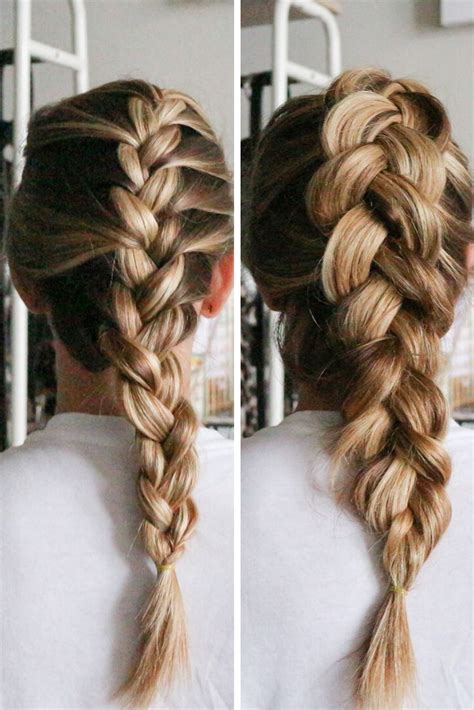Table of Contents
- Introduction
- French Braiding: An Art of Elegance
- History of French Braiding
- Techniques of French Braiding
- Pros and Cons of French Braiding
- Dutch Braiding: A Statement of Boldness
- History of Dutch Braiding
- Techniques of Dutch Braiding
- Pros and Cons of Dutch Braiding
- The Decisive Comparison: French vs. Dutch
- Comparative Analysis of Techniques
- Comparative Analysis of Styles
- Comparative Analysis of Suitability
- Conclusion: A Symphony of Styles
Introduction
The realm of hair braiding is a tapestry of infinite creativity, where two distinct techniques, French and Dutch braiding, stand as pillars of timeless elegance and bold individuality. This comprehensive guide delves into the intricacies of each style, comparing their techniques, aesthetics, and suitability to various occasions, empowering you with the knowledge to choose the perfect braid for your unique personality and style.

French Braiding: An Art of Elegance
History of French Braiding
French braiding, also known as “tresse française,” traces its origins back centuries to the French countryside. It was traditionally used to keep hair neat and out of the way during work or play. Over time, it evolved into an ornamental hairstyle that captured the hearts of women worldwide, becoming an indispensable part of both casual and formal attire.
Techniques of French Braiding
French braiding is characterised by its smooth, intricate weave that appears to lay flat against the head. It begins with dividing the hair into three equal sections near the crown. The right strand crosses over the middle strand, followed by the left strand crossing over the new middle strand. This pattern continues, with new hair being added from the sides as the braid progresses down the head.
Pros and Cons of French Braiding
-
Pros:
- Creates a sleek, sophisticated look
- Holds hair securely in place
- Can be dressed up or down for various occasions
-
Cons:
- Can be time-consuming to braid
- May cause tension on the scalp if braided too tightly
Dutch Braiding: A Statement of Boldness
History of Dutch Braiding
Dutch braiding, also known as “Nederlandse vlecht,” shares a similar origin to French braiding but is believed to have originated in the Dutch countryside. It first gained prominence in the 16th century and has since become a popular hairstyle for both men and women, exuding a sense of strength and confidence.
Techniques of Dutch Braiding
Unlike French braiding, Dutch braiding involves crossing the outer strands under the middle strand instead of over it. This creates a more prominent, raised effect that stands out from the scalp. The braiding technique remains the same, with hair being added from the sides as the braid progresses.
Pros and Cons of Dutch Braiding
-
Pros:
- Creates a voluminous, eye-catching style
- Offers a secure hold
- Can be styled in a variety of ways
-
Cons:
- May be less comfortable than French braiding
- Can appear messy if not braided carefully
The Decisive Comparison: French vs. Dutch
Comparative Analysis of Techniques
Both French and Dutch braiding require a similar level of skill to execute. However, Dutch braiding tends to be slightly more challenging for beginners due to the underhand crossing technique.
Comparative Analysis of Styles
French braiding creates a smooth, elegant look that complements both formal and casual attire. Dutch braiding, on the other hand, exudes a more bold, attention-grabbing style that is perfect for making a statement.
Comparative Analysis of Suitability
French braids are suitable for most hair types and lengths, although they may not hold as well in fine or short hair. Dutch braids are an excellent choice for thick or curly hair, as they provide a secure hold and create a more eye-catching effect.
Conclusion: A Symphony of Styles
Ultimately, the choice between French and Dutch braiding depends on your personal preference and the desired outcome. French braiding offers a timeless, sophisticated look, while Dutch braiding exudes a bold, statement-making style. Both techniques can be adapted to suit various hair types and occasions, making them versatile additions to any hair styling repertoire. So, whether you seek elegance or boldness, French or Dutch braiding will elevate your look to new heights. Embrace the art of braiding and let your hair tell a story of beauty and confidence.
